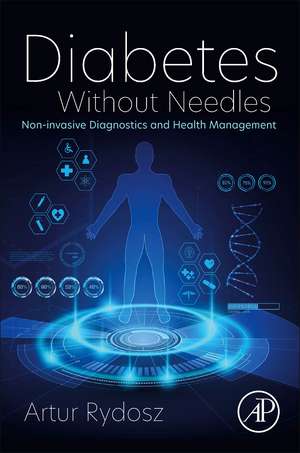Diabetes Without Needles: Non-invasive Diagnostics and Health Management
Autor Artur Rydoszen Limba Engleză Paperback – 24 ian 2022
This book is a valuable resource for researchers in the areas of diabetes, noninvasive methods and diagnostics development.
- Appeals to a multidisciplinary audience, including scientists, researchers and clinicians with an interest in noninvasive blood glucose monitoring technologies
- Features the latest advances in the field of noninvasive methods for diabetes monitoring, including recent results, perspectives and challenges
- Covers various noninvasive methods, including optical measurements, electrochemical, exhaled breath analysis, and more
Preț: 698.81 lei
Preț vechi: 877.01 lei
-20% Nou
Puncte Express: 1048
Preț estimativ în valută:
133.76€ • 145.34$ • 112.43£
133.76€ • 145.34$ • 112.43£
Carte tipărită la comandă
Livrare economică 14-28 aprilie
Preluare comenzi: 021 569.72.76
Specificații
ISBN-13: 9780323998871
ISBN-10: 0323998879
Pagini: 312
Ilustrații: 50 illustrations (25 in full color)
Dimensiuni: 152 x 229 x 26 mm
Greutate: 0.42 kg
Editura: ELSEVIER SCIENCE
ISBN-10: 0323998879
Pagini: 312
Ilustrații: 50 illustrations (25 in full color)
Dimensiuni: 152 x 229 x 26 mm
Greutate: 0.42 kg
Editura: ELSEVIER SCIENCE
Cuprins
1. Introduction
2. Diabetes
3. The review of the non-invasive methods - basics
4. The review of the noninvasive methods - proposed ideas and their realizations
5. Further perspectives and challenges
6. Conclusions
2. Diabetes
3. The review of the non-invasive methods - basics
4. The review of the noninvasive methods - proposed ideas and their realizations
5. Further perspectives and challenges
6. Conclusions
